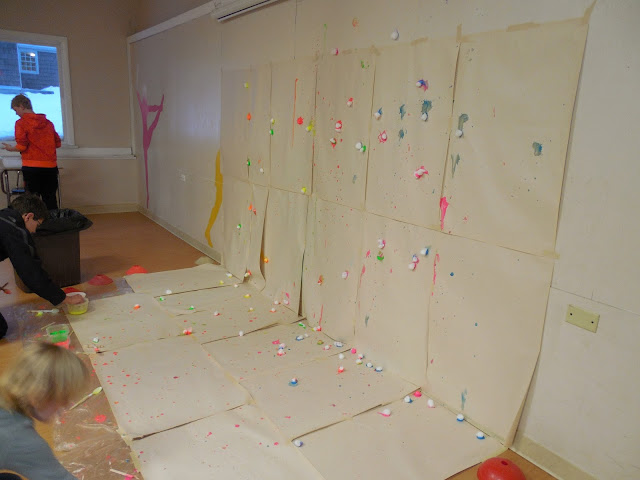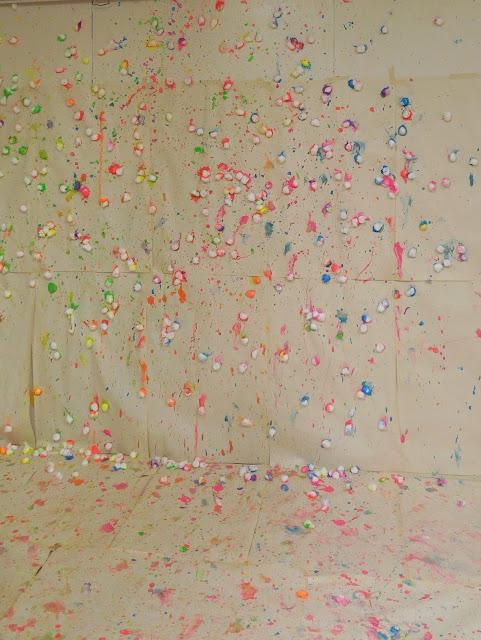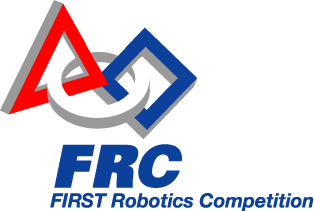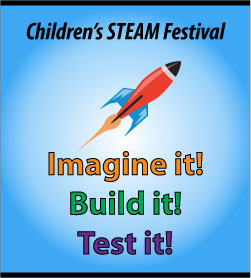It has recently become more common to
add the "A", or art, to STEM education to make it STEAM
education. It is not only a popular trend in education, but it also
makes a lot of sense! The world is not sectioned off into subject
specific experiences! Learning all of these skills together engages
the whole brain and develops skills that are transferable to many
educational and career-related areas.
This post contains affiliate links, meaning I earn a small commission from purchases made through these links at no additional cost to you. Please see disclosures for more details.
Family STEAM Night at School
For the past few years we have hosted a Family Science Night at my small independent PreK-9th school. We focus our
family activities around a theme and this year it was STEAM. Each
activity had some combination of the STEM (science, technology, engineering, and math) disciplines with Art. It was a big hit and I am excited to share the
activities with you today.
These are activities you could use at an event like ours, in the classroom, at home, during your STEAM afterschool program, or summer camp.
Catapult Painting
Catapult painting was an idea I had read about and thought it sounded incredibly fun. The task was to build a catapult. Then test your catapult by launching paint-covered cotton balls at a wall.
Despite the fun factor, I admittedly was hesitant to do this activity, particularly as we would be inside due to frigid temperatures (our event was in February in New England). I was convinced otherwise. Although I would highly recommend doing it outside instead, it was a great project.
 |
| Getting ready to load the catapult! ©SBF 2015 |
We printed a few pictures of catapults
out and then left it up to families to determine how they would build
their device.
Cotton balls and washable
tempera paint served as the
"ammunition".
This was not only an interesting
engineering project, but it also resulted in a modern art mural!
If I
were to do this with a smaller group of kids, or in a different
situation, I would leave the catapult building open-ended, but guide
the experimenting with some questions.
- What happens when you launch
from the ground vs the air?
- How can you modify your catapult to make the cotton
ball travel farther?
- What shape is the path of the cotton ball when
it flies?
- If you use just a spoon as a catapult, where is the
fulcrum?
- What else could we use to shoot paint besides cotton balls?
For some links to great catapult building
designs for kids check out this post at
Fun-a-day.com.
 |
| Early in the evening... ©SBF 2015 |
 |
| The catapult painting mural! ©SBF 2015 |
Recyclable Marble Runs
Building marble runs and marble roller coasters is always a popular activity with kids and adults alike. This is an excellent engineering project, as it involves design and lots of trial and error, in addition to being a sculpture project!
We collected recyclables from the
school community in advance of our event. We had boxes, cardboard
tubes, plastic tubs and more. We did not accept glass items. We
provided
dixie cups,
tape (
A LOT of TAPE!),
scissors and
marbles in addition
to the recyclables.
I made a small sample marble run, but otherwise
designs were left to the participants.
 |
| Building marble runs. ©SBF 2015 |
This is always great fun and a
wonderful family project for all ages. I think an interesting
challenge would be to try to connect all of the marble runs together
to make a giant one!
Symmetrical Snowflakes
One of my favorite activities of the evening was investigating symmetry and angles by making
popsicle/craft stick snowflakes.
Supplies:
 |
| Symmetrical with 6 points, true to a snowflakes form. ©SBF 2015 |
The kids
went to town and created some beautiful designs. Snowflakes may not
be what you are thinking about this time of year, but this is a fun
math exercise with lovely results!
 |
| Beautiful! ©SBF 2015 |
We had an additional snowflake building
room with hot glue guns that was not as successful. The intention was
that students would be able to take their creations home, but it
turns out the more simple solution of building giant ones on the
floor was more engaging, safer and had better results! I'd recommend
going that route!
Bubble Painting
I love bubble painting! There are so many math and science concepts inherent in the study of bubbles. From angles, to surface tension there is a lot to learn.
Supplies:
 |
| A beautiful way to preserve and study bubbles! ©SBF 2015 |
We used
plastic wash basins for our
bubble paint solution. Each kid or parent got a
straw to blow bubbles
in the solution and then placed a piece of
cardstock onto the bubbles.
They flipped it over, popped the bubbles and had a beautiful picture!
An
FYI: The neon colored
tempera paint I had purchased was not dark
enough to make good images, so we added some
darker colors. I also
recommend making a bubble solution with some
corn syrup in it for
stronger, stickier bubbles. There are lots of links to bubble recipes
on my post
"Bubble Fun!".
For a more detailed explanation of bubble painting visit this
Education.com page or
just Google "Bubble painting" and you will find lots of options.
DNA Extraction and Double Helix Model
Our biology students helped one of my
science teaching colleagues demonstrate
fruit DNA extraction for families.
In addition to seeing fruit DNA families created a huge double helix model made from
pipe cleaners (chenille stems). Each nitrogenous base had a corresponding color so that students could accurately make up the base pairs. The model made it from the floor to the ceiling!
Hosting a Family STEAM Night
You can host your own STEAM night at school, or just with your family at home. These would be great activities for afterschool programs and summer camps as well.
If you are planning your own STEAM event, you might find the
resources here helpful. We were fortunate to have the support of our
administration, lots of volunteer help from fellow teachers the night
of the event and an interested and engaged community to participate
in order to make this event a success.
Thanks for exploring STEM plus Art with
me today! I'm excited to wrap up our STEAM festival tomorrow with a
closer look at math and science. To review our schedule and find
links to all of the festival posts, click the Children's STEAM
Festival button below.
















































